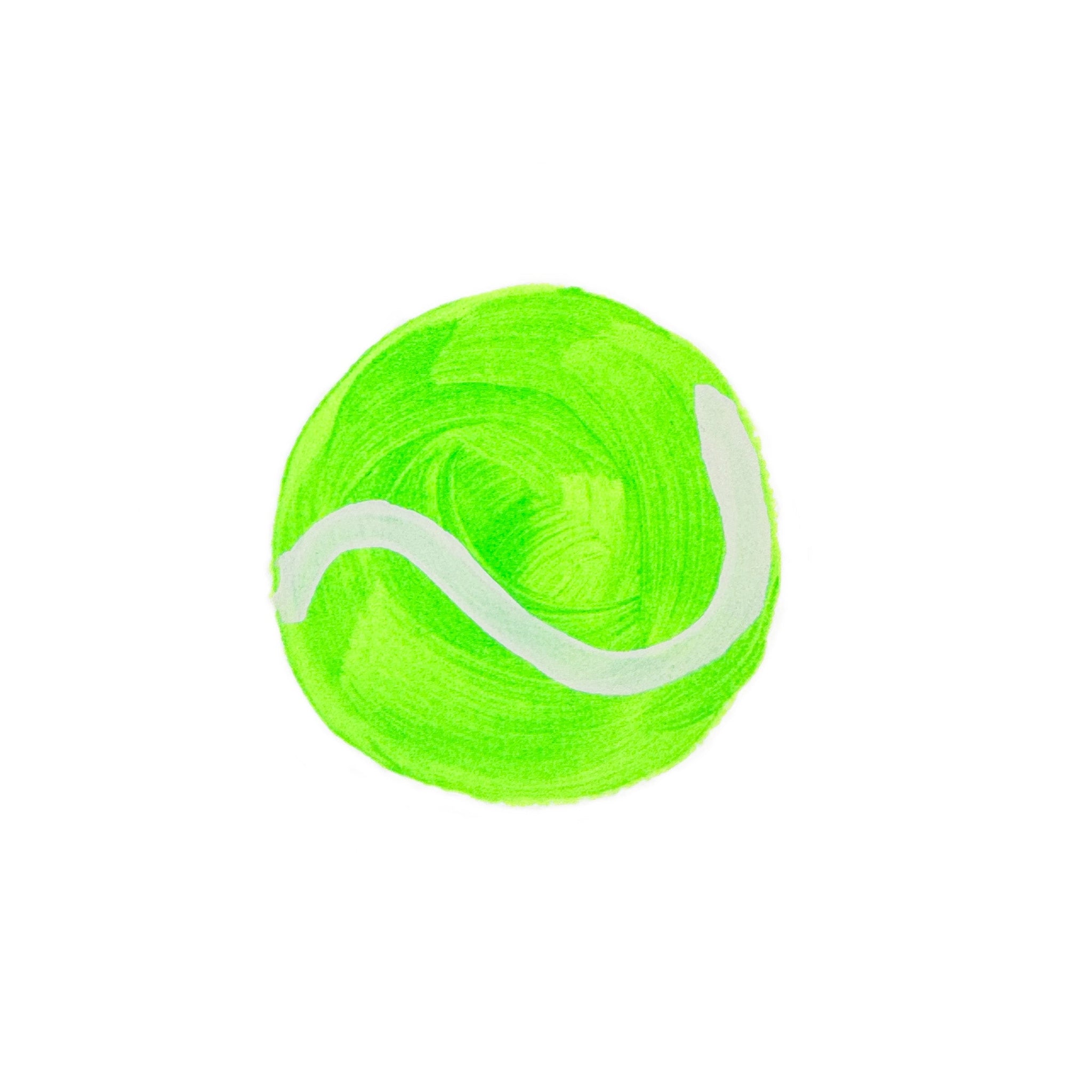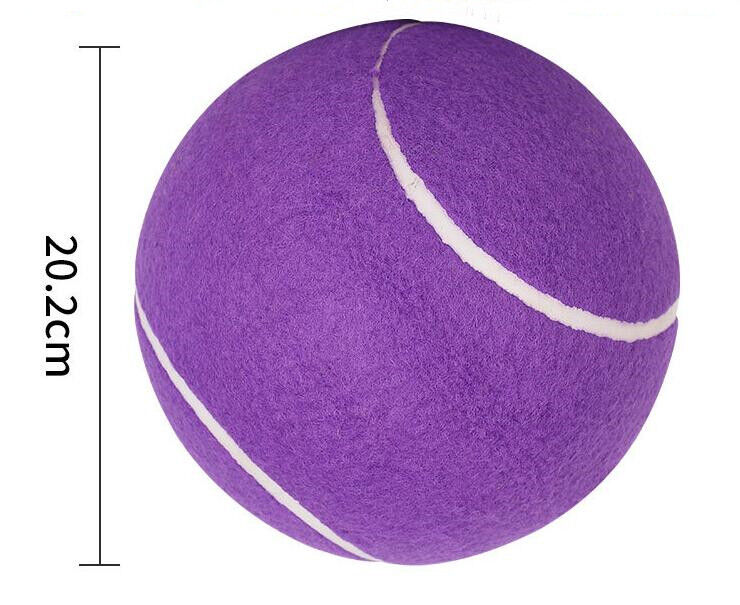The role of a tennis ball in the game cannot be underestimated, as it serves as the central element that drives the entire sport. Whether you're a professional player or a casual enthusiast, understanding the significance of the tennis ball is crucial to enhancing your performance and appreciation of the game. Tennis balls play a vital role in determining the speed, spin, and bounce of every rally, making them an essential component of the sport.
Tennis has evolved significantly over the years, with advancements in technology and equipment playing a key role in shaping the modern game. Among all the equipment, the tennis ball remains a constant, yet its role is often overlooked. The quality and characteristics of a tennis ball directly impact the gameplay, influencing everything from the serve to the groundstrokes.
This article delves into the multifaceted role of tennis balls, exploring their importance in the sport, the factors that affect their performance, and how players can optimize their use. Whether you're a beginner or an experienced player, this comprehensive guide will provide valuable insights into the world of tennis balls and their role in the game.
Read also:Kawaii Sofa The Ultimate Guide To Stylish And Comfortable Living
Table of Contents
- The History of Tennis Balls
- Types of Tennis Balls
- Construction and Materials
- Factors Affecting Performance
- Selecting the Right Tennis Ball
- Role in Training and Practice
- Role in Competitive Matches
- Longevity and Maintenance
- Environmental Impact
- Future Innovations in Tennis Balls
The History of Tennis Balls
The evolution of tennis balls mirrors the development of the sport itself. Early tennis balls were made from materials like leather and wool, which were far removed from the modern pressurized balls we use today. Over time, advancements in material science have transformed the tennis ball into a highly engineered piece of equipment.
In the 19th century, the introduction of vulcanized rubber revolutionized the production of tennis balls, providing players with more consistent bounce and durability. Today, tennis balls are manufactured using advanced techniques, ensuring they meet the rigorous standards set by governing bodies like the International Tennis Federation (ITF).
Historical Milestones in Tennis Ball Development
- 12th Century: Early tennis balls made from leather and stuffed with hair or wool.
- 1870s: Introduction of vulcanized rubber tennis balls.
- 1920s: Development of pressurized tennis balls with felt coverings.
- 2000s: Emergence of pressureless tennis balls for longevity.
Types of Tennis Balls
Understanding the different types of tennis balls is essential for players looking to optimize their gameplay. The two main categories are pressurized and pressureless tennis balls, each with its own set of advantages and disadvantages.
Pressurized tennis balls are filled with air and provide a lively bounce, making them ideal for competitive play. On the other hand, pressureless tennis balls maintain their shape and performance over time, making them a popular choice for practice sessions.
Key Differences Between Pressurized and Pressureless Tennis Balls
- Pressurized Balls: Higher initial bounce, shorter lifespan.
- Pressureless Balls: Longer lifespan, consistent performance over time.
Construction and Materials
The construction of a tennis ball involves a meticulous process to ensure it meets the demanding standards of the sport. Modern tennis balls are typically made from a rubber core covered with a durable felt material. The rubber core provides the bounce, while the felt covering enhances friction and durability.
Manufacturers use advanced techniques to ensure consistency in size, weight, and bounce. The ITF mandates that tennis balls must have a diameter between 6.54 cm and 6.86 cm and weigh between 56 grams and 59.4 grams.
Read also:Understanding The World Of Web A Comprehensive Guide To Websites Development And Optimization
Components of a Tennis Ball
- Rubber Core: Provides bounce and resilience.
- Felt Covering: Enhances grip and durability.
- Pressurized Air: Increases liveliness in pressurized balls.
Factors Affecting Performance
Several factors influence the performance of a tennis ball, including altitude, temperature, and surface type. Players must be aware of these variables to adjust their gameplay accordingly. For instance, high-altitude environments can affect the bounce and speed of a tennis ball, requiring players to adapt their techniques.
Temperature also plays a crucial role, as warmer conditions can increase the internal pressure of pressurized balls, leading to a more lively bounce. Conversely, colder temperatures can reduce the ball's responsiveness, affecting gameplay.
Impact of Environmental Factors
- Altitude: Affects bounce and speed.
- Temperature: Influences internal pressure and liveliness.
- Surface Type: Impacts spin and friction.
Selecting the Right Tennis Ball
Choosing the right tennis ball is essential for optimizing performance and enjoyment of the game. Players should consider factors such as their skill level, playing environment, and intended use when selecting a tennis ball. Beginners may prefer pressureless balls for practice, while professionals often opt for pressurized balls for competitive matches.
Additionally, players should pay attention to the ITF certification and expiration dates when purchasing tennis balls to ensure they meet the required standards.
Tips for Selecting the Right Tennis Ball
- Consider skill level and playing environment.
- Check ITF certification and expiration dates.
- Choose pressurized balls for competition and pressureless balls for practice.
Role in Training and Practice
Tennis balls play a critical role in training and practice sessions, helping players develop their skills and techniques. Pressureless balls are often preferred for practice due to their longer lifespan and consistent performance. Coaches use various drills and exercises involving tennis balls to enhance players' footwork, hand-eye coordination, and shot accuracy.
Incorporating tennis balls into training routines can also improve players' mental focus and decision-making abilities. By simulating match conditions during practice, players can better prepare for competitive play.
Training Exercises Using Tennis Balls
- Footwork Drills: Enhance agility and movement on the court.
- Shot Accuracy Drills: Improve precision and control.
- Mental Focus Exercises: Develop decision-making skills.
Role in Competitive Matches
In competitive matches, the role of tennis balls is paramount, as they directly impact the outcome of the game. Players rely on the consistent performance of tennis balls to execute their strategies and tactics. Governing bodies like the ITF enforce strict regulations to ensure fairness and equality in competition.
During matches, players may request new balls at regular intervals to maintain optimal performance. This practice ensures that the balls remain lively and responsive throughout the game.
Regulations for Tennis Balls in Competition
- ITF Standards: Mandate size, weight, and bounce specifications.
- Ball Changes: Occur at regular intervals to maintain performance.
- Player Requests: Allowed to ensure fair gameplay.
Longevity and Maintenance
The longevity of a tennis ball depends on several factors, including its type, usage, and storage conditions. Pressurized balls typically have a shorter lifespan due to the loss of internal pressure over time, while pressureless balls can last significantly longer. Proper storage and maintenance can extend the life of tennis balls, ensuring they perform optimally for longer periods.
Players should store tennis balls in a cool, dry place to prevent moisture damage and maintain their shape. Additionally, using ball cans or vacuum-sealed containers can help preserve the internal pressure of pressurized balls.
Tips for Extending Tennis Ball Lifespan
- Store in cool, dry conditions.
- Use ball cans or vacuum-sealed containers for pressurized balls.
- Avoid exposing balls to extreme temperatures or moisture.
Environmental Impact
The production and disposal of tennis balls have significant environmental implications. Traditional tennis balls are made from non-biodegradable materials, contributing to waste and pollution. Efforts are being made to develop more sustainable alternatives, such as eco-friendly tennis balls made from biodegradable materials.
Players and manufacturers can reduce the environmental impact of tennis balls by adopting recycling programs and supporting sustainable practices. Initiatives like reusing old tennis balls for other purposes or donating them to charities can also help minimize waste.
Environmental Initiatives in Tennis
- Eco-Friendly Tennis Balls: Made from biodegradable materials.
- Recycling Programs: Reduce waste and promote sustainability.
- Reusing Old Balls: Donate or repurpose for other uses.
Future Innovations in Tennis Balls
The future of tennis balls holds exciting possibilities, with advancements in technology and materials driving innovation in the industry. Researchers are exploring new ways to enhance the performance and sustainability of tennis balls, paving the way for the next generation of equipment.
Emerging technologies such as smart tennis balls equipped with sensors could revolutionize the sport, providing players with real-time data on their performance. These innovations have the potential to transform the way players train and compete, offering new opportunities for growth and development.
Potential Future Innovations
- Smart Tennis Balls: Equipped with sensors for real-time data.
- Sustainable Materials: Biodegradable and eco-friendly options.
- Improved Performance: Enhanced durability and consistency.
Conclusion
In conclusion, the role of tennis balls in the sport cannot be overstated. From their historical development to their impact on gameplay, tennis balls are an integral part of the sport that deserves recognition and understanding. By selecting the right tennis ball, maintaining it properly, and staying informed about advancements in the industry, players can optimize their performance and enjoyment of the game.
We encourage readers to share their thoughts and experiences with tennis balls in the comments section below. Additionally, feel free to explore other articles on our site for more insights into the world of tennis. Together, let's continue to elevate our understanding and appreciation of this fascinating sport.


